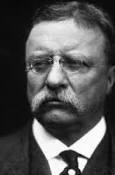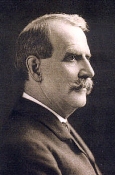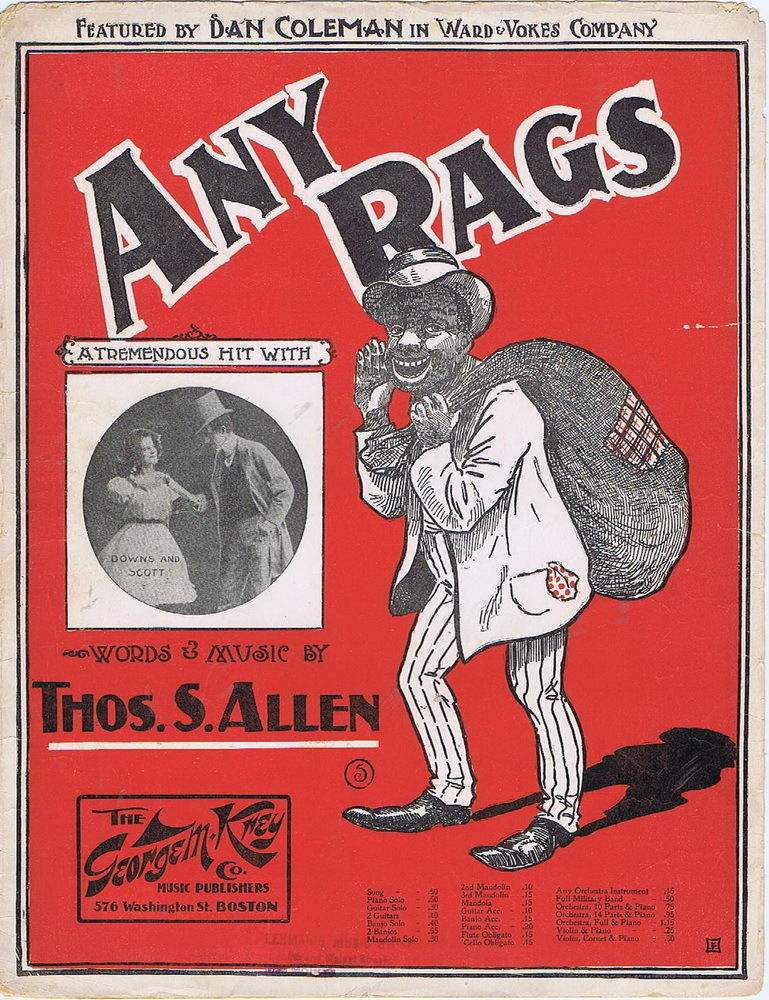
Postage Stamps of the United States - 1904
Politics

President
Theodore Roosevelt

Postmaster General:
Jan. 1- Oct. 9
Henry C. Payne
Oct. 10 - Dec. 31
Robert J. Wynne
Music

Click Control Above To Hear
1904 "Any Rags"
Postage Rates
Domestic Letter Rate: 2¢ per oz.
Postcard Rate: 1¢
Registry Fee: 8¢
Foreign Rate: 5¢
Stamps
The Louisiana Purchase Exposition Issue- The 1904 World's Fair in St. Louis
Flat Plate - Perf 12 - Double-line Watermark - 100 Subject Plates

1¢ Livingston

2¢ Jeffersonn

3¢ Monroe

5¢ McKinley

10¢ Map Louisiana Purchase
The Louisiana Purchase Exposition Stamps of 1904
As with the Columbian, Trans-Mississippi, and Pan-American stamps that preceded them and as with many of the "commemorative" sets issued in the following decades, the Louisiana Purchase stamps were issued to promote an exposition - the 1904 World's Fair in St. Louis.
To get around the law prohibiting the use of advertisements on U.S. postage stamps, a disclaimer of sorts - "Commemorative Series of 1904" - was placed on each stamp, rather than the name of the World's Fair itself. And as with the earlier stamps, this gave rise to a variety of Louisiana Purchase Exposition and St. Louis World's Fair cancellations promoting and providing souvenirs for the event. Many of the cancellations and covers bearing these cancellations are very collectible today.
The St. Louis World's Fair had originally been planned to open in 1903, on April 30, to more-or-less coincide with the 100th year anniversary of the Louisiana Purchase, but over time grew to such an extent, including the addition of the Summer Olympics of 1904, also held in St. Louis, that the opening was delayed a year. The stamps of this set were issued in conjunction with the opening of the World's Fair on April 30, 1904.
The 1¢ Livingston
Robert Livingston, born to a prominent New York family, was a delegate to the Continental Congress and was one of the five drafters of the Declaration of Independence, although he was called back to New York and did not actually sign it. In 1801 he was appointed by President Thomas Jefferson as Minister to France. By 1802, frustrated with the Napoleonic dictatorship and worried about the French presence in New Orleans, he proposed that the U.S. buy New Orleans and part of Western Florida from the French in the hope of avoiding what seemed an inevitable war. At first the French ignored the offer, prompting Jefferson to send James Monroe to aid with negotiations. Many historians think that Livingston had already lain most of the foundation for the deal and that Monroe's contribution was minor, but whatever the case may be, on May 2, 1903, both Monroe and Livingston signed the treaty for the purchase of the Louisiana Territory for about $15 million, certainly one of the greatest land purchases of all time - see the map on the ten cent stamp above.
The 2¢ Jefferson
Jefferson's part in the purchase of the Louisiana Territory was that he had the foresight to send the two men to France who subsequently negotiated the largest land deal in American history.
The 3¢ Monroe
As mentioned above, many historians think Monroe's contributions to the negotiations that led to the purchase of the Louisiana Territory was minor. Yet his name appears on the treaty that changed the face of America, earning him the honor of being commemorated by this series.
The 5¢ McKinley
President McKinley was not involved with the purchase of the Louisiana Territory at all. In fact, he was not born until forty years after the event. But he was the president who helped David Rowland Francis, ex-governor of Missouri, get Congress to establish an event in St. Louis commemorating the 100th anniversary of the signing of the Louisiana Purchase.
Ironically, President McKinley was assassinated nearly three years before the grand opening of the 1904 Louisiana Purchase Exposition, after delivering a speech at the Pan American Exposition in Buffalo, New York. The five cent stamp is more a memorial stamp than a commemorative one.
The 10¢ Map of the Louisiana Purchase
This stamp has always been one of the author's favorites. It certainly shows vividly the incredible impact the treaty had on the shape of American history.
The following postage stamp varieties were first issued by the U.S. in 1904:
No new varieties of ordinary issue U.S. postage stamps were issued in 1904
No new varieties of U.S. Special Delivery stamps were issued in 1904
No new varieties of the Postage Due stamps were issued in 1904
Commemoratives:
Number 323 - 1¢ Livingston - 79,779,200 issued - First Day: April 30, 1904
Designer: C. Aubrey Huston - Engraver: Marcus W. Baldwin (vignette) - R. Ponickau, L. F. Ellis and G. Rose (frame)
Number 324 - 2¢ Jefferson - 192,732,400 issued - First Day: April 30, 1904
Designer: Claire Aubrey Huston - Engravers: G. F. C. Smillie (vignette) - Robert Ponickau, L. F. Ellis and G. Rose (frame)
Number 325 - 3¢ Monroe - 4,542,600 issued - First Day: April 30, 1904
Designer: Claire Aubrey Huston - Engravers: G. F. C. Smillie (vignette) - Robert Ponickau and G. Rose (frame)
Number 326 - 5¢ McKinley - 6,926,700 issued - First Day: April 30, 1904
Designers: Claire Aubrey Huston and G. F. C. Smillie (vignette) - Engravers: Robert Ponickau and G. Rose (frame)
Number 327 - 10¢ Map of the Louisiana Purchase - 4,011,200 issued - First Day: April 30, 1904
Designer: Claire Aubrey Huston - Engravers: Robert Ponickau, L. F. Ellis and G. Rose





